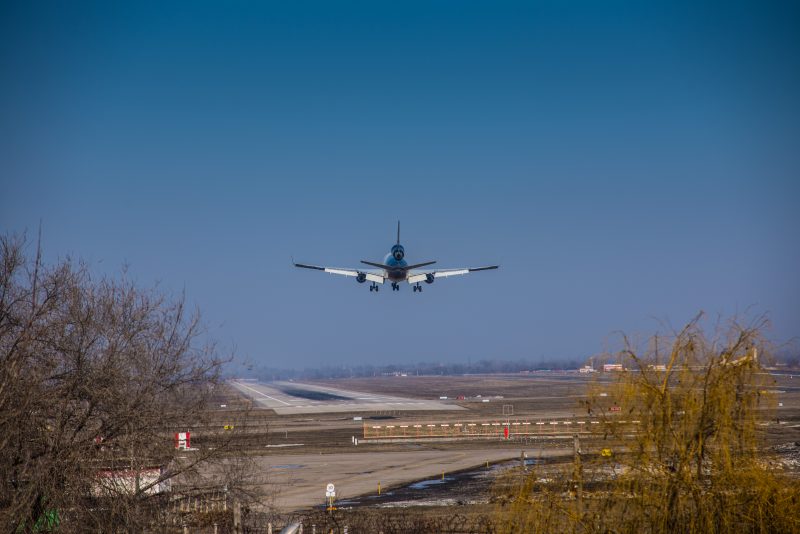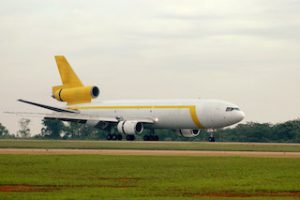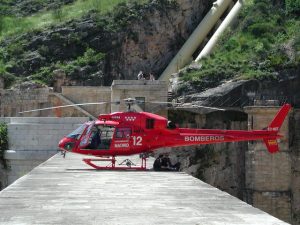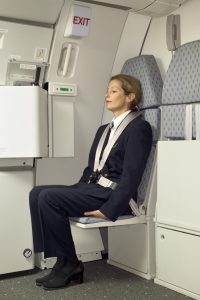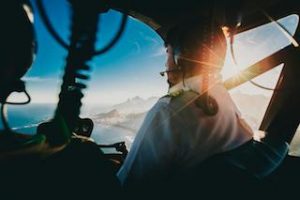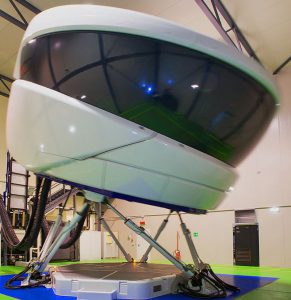Trained By The Best Aviation Institute
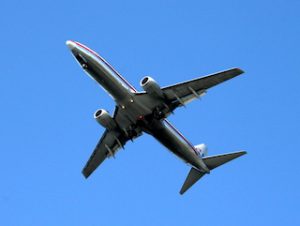 In the dynamic and demanding field of aviation, practical training is essential for developing the skills necessary to ensure safety and efficiency in the cockpit. Pilots undergo rigorous training, including real-world scenario exercises, designed to simulate the complexities of actual flight operations. This article will delve into the types of scenario-based training that pilots engage in, highlighting how the best aviation institutes incorporate these exercises into their curricula to prepare future aviators for the challenges they will face.
In the dynamic and demanding field of aviation, practical training is essential for developing the skills necessary to ensure safety and efficiency in the cockpit. Pilots undergo rigorous training, including real-world scenario exercises, designed to simulate the complexities of actual flight operations. This article will delve into the types of scenario-based training that pilots engage in, highlighting how the best aviation institutes incorporate these exercises into their curricula to prepare future aviators for the challenges they will face.
Real-world scenario exercises of the best aviation institute
Real-world scenario exercises offered by the best aviation institute are integral to pilot training because they provide a realistic context in which students can apply their theoretical knowledge. These exercises help pilots develop critical thinking, decision-making, and problem-solving skills that are vital for managing in-flight challenges. The aviation industry is unpredictable, and effective training must prepare pilots to handle a variety of scenarios, from routine operations to emergency situations.
Benefits of scenario-based training
-
- Enhanced decision-making skills: Pilots learn to make informed decisions under pressure, simulating real-world conditions where time and clarity are of the essence.
- Increased situational awareness: Training exercises improve pilots’ ability to recognise and respond to changing conditions in the cockpit.
- Reinforced safety protocols: Realistic scenarios instil a strong safety culture, emphasising the importance of adherence to regulations and procedures.
- Teamwork and communication: Many scenarios require pilots to work in teams, enhancing their ability to communicate effectively with co-pilots and crew members.
Types of real-world scenario exercises
The best aviation institutes implement various real-world scenario exercises tailored to meet the training needs of their students. Here are some common types of exercises:
1) Emergency Situations
Overview: Emergency situation exercises are designed to replicate potential in-flight emergencies, such as engine failure, loss of cabin pressure, or system malfunctions.
Implementation: During these exercises, students engage in flight simulators or actual flight scenarios where they must react quickly to various emergency situations. Instructors introduce unexpected failures and monitor how students respond.
Objectives
-
-
- Train pilots to remain calm and effective in high-stress situations
- Develop proficiency in emergency procedures and checklists
- Enhance the ability to communicate and coordinate with crew members during crises
-
2) Adverse weather conditions
Overview: Weather significantly impacts flight safety, and training under adverse weather conditions is crucial for developing pilots’ skills.
Implementation: Aviation institutes use simulators to mimic challenging weather scenarios, including thunderstorms, fog, and high winds. Pilots practice navigating these conditions, making real-time decisions based on simulated weather data.
Objectives
-
-
- Familiarise pilots with handling low visibility and turbulent conditions
- Emphasise the importance of weather briefings and understanding meteorological data
- Enhance the ability to make go/no-go decisions based on weather conditions
-
3) Multi-crew operations
Overview: Multi-crew operations training focuses on the dynamics of working in a cockpit with multiple pilots, which is essential for commercial aviation.
Implementation: Students engage in simulated flights where they assume different roles within the cockpit, such as pilot-in-command and co-pilot. This exercise emphasises crew resource management principles.
Objectives
-
-
- Teach effective communication and collaboration among crew members
- Develop skills in delegation and task management
- Practice handling in-flight challenges as a cohesive team
-
4) Instrument flight training
Overview: Instrument flight training prepares pilots to fly solely by reference to instruments in the cockpit, crucial for navigating in poor visibility conditions.
Implementation: Students practice various instrument approaches and maneuvers in simulators, focusing on precision flying and maintaining control during instrument flight rules (IFR) operations.
Objectives
-
-
- Build proficiency in using cockpit instruments for navigation and control
- Emphasise the importance of instrument checks and situational awareness.
- Prepare pilots for real-world IFR flying scenarios.
-
5) Scenario-based cross-country flights
Overview: Cross-country flights simulate longer journeys that pilots may encounter in their careers, requiring advanced planning and decision-making.
Implementation: Students plan and execute flights that involve multiple legs and various airport operations. Instructors introduce challenges along the route, such as diversions, unexpected air traffic, or changes in weather.
Objectives
-
-
- Enhance flight planning skills, including route selection and fuel calculations
- Develop skills in adapting to changing situations during flight
- Foster a deeper understanding of air traffic control communication and navigation
-
Role of the best aviation institutes in scenario training
Top aviation institutes play a crucial role in providing effective scenario-based training through various means:
Advanced simulation technology: The best aviation institutes invest in state-of-the-art flight simulators that replicate a wide range of aircraft and flying conditions. These simulators allow for realistic training environments where students can practice various scenarios safely. Advanced features, such as realistic flight dynamics and environmental conditions, enhance the training experience.
Experienced instructors: Highly qualified instructors with extensive industry experience lead scenario-based training exercises. These instructors not only provide guidance and feedback but also share insights from their real-world experiences, enriching the learning process for students.
Comprehensive curriculum design: Aviation institutes design their curricula to integrate scenario-based training throughout the program. This approach ensures that students engage in real-world exercises at various stages of their education, progressively building their skills and confidence.
Collaboration with industry partners: Many top aviation institutes collaborate with airlines and aviation organisations to ensure their training programs align with industry standards and needs. These partnerships often provide students with additional opportunities for internships and real-world experience.
Focus on safety culture: Promoting a strong safety culture is a priority for the best aviation institutes. Scenario-based training exercises emphasise safety protocols, risk management, and emergency preparedness, instilling a safety-first mindset in future pilots.
Preparing for a career in aviation
Engaging in real-world scenario exercises prepares aspiring pilots for the challenges they will face in their careers. The ability to handle emergencies, navigate adverse conditions, and work effectively as part of a crew are critical skills for any pilot.
Building confidence and competence: By practicing in realistic scenarios, students build their confidence and competence, which are essential for successful flight operations. The best aviation institutes focus on nurturing these qualities through continuous assessment and feedback.
Networking and industry connections: Training at a top aviation institute provides students with valuable networking opportunities. Many institutes host events and seminars featuring industry professionals, allowing students to build connections that can be beneficial when seeking employment.
Career readiness: Upon graduation, pilots who have engaged in comprehensive scenario training are better prepared to enter the workforce. They possess the skills and experience necessary to handle the complexities of flying and are more attractive candidates to potential employers.
Importance of real-world scenario exercises in pilot training
Real-world scenario exercises are a vital component of pilot training, providing aspiring aviators with the practical experience they need to succeed in the aviation industry. The best aviation institutes understand the importance of these exercises and incorporate them into their curricula to ensure their students are well-prepared for the challenges of flying.
Through emergency situation training, adverse weather simulations, multi-crew operations, instrument flight training, and cross-country flights, students develop the critical skills necessary for safe and effective flight operations. As the aviation industry continues to evolve, scenario-based training will remain a cornerstone of pilot education, helping to cultivate the next generation of skilled and confident aviators.
If you aspire to soar in the skies, consider enrolling in a top aviation institute that emphasizes real-world scenario training. With the right education and training, you can take your first step toward a rewarding career in aviation, equipped with the skills and knowledge to navigate any challenge that comes your way.

